Optics and Photonics in AR/VR
Augmented Reality (AR) and Virtual Reality (VR) stand at the cutting edge of digital evolution. The intricate science of optics and photonics, which delves deep into the generation, detection, and manipulation of light, plays a crucial role in this transformation.
Fig. 1 (a) showcases the design of an AR system, emphasizing the pivotal role of optics. This illustration depicts the journey of light: from the light engine to the in-coupler, its movement through the waveguide, and its eventual interaction with our eyes via the out-coupler. Fig. 1 (b) highlights the potential of virtual prototyping using Ansys, integrating results from both Lumerical and Zemax for a comprehensive AR system simulation.
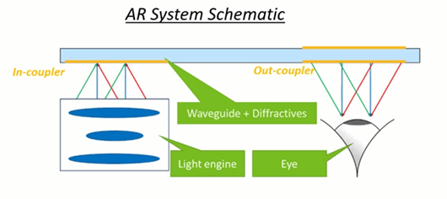
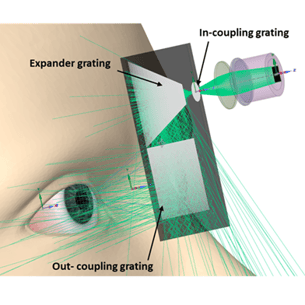
(a) (b)
Fig. 1 (a) AR system schematics (b) Virtual prototyping by Ansys
Fig. 2 reveals the complex components of AR glasses from Lumus. The importance of micro-displays, beam splitters, mirrors, prisms, collimators, and light sources like LEDs becomes evident. The trajectory of light, transitioning from in-plane to out-plane, unveils the wonders of optical engineering.
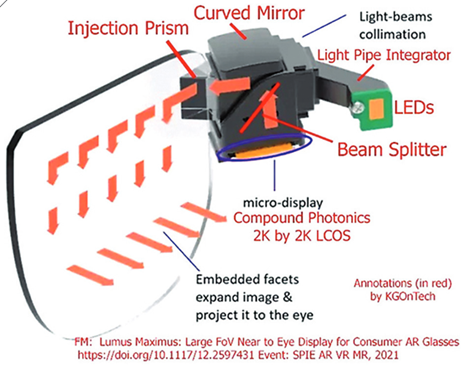
Fig. 2 AR glasses from Lumus (https://kguttag.com/2021/05/24/exclusive-lumus-maximus-2k-x-2k-per-eye-3000-nits-50-fov-with-though-the-optics-pictures/
Challenges in AR/VR and Simulation's Role
For AR and VR devices to revolutionize our experiences, they must be lightweight, user-friendly, and capable of producing high-definition, lifelike images. Addressing these requirements involves:
- Balancing device weight without compromising performance.
- Producing vibrant and clear images.
- Prioritizing user comfort.
Simulation tools, notably Lumerical, Zemax, and Speos, are invaluable in addressing these challenges. They ensure devices meet industry standards, optimizing both performance and user experience. Fig.3 provides insight into Ansys's comprehensive simulation approach, ranging from nano/micro scales to system-level simulations.
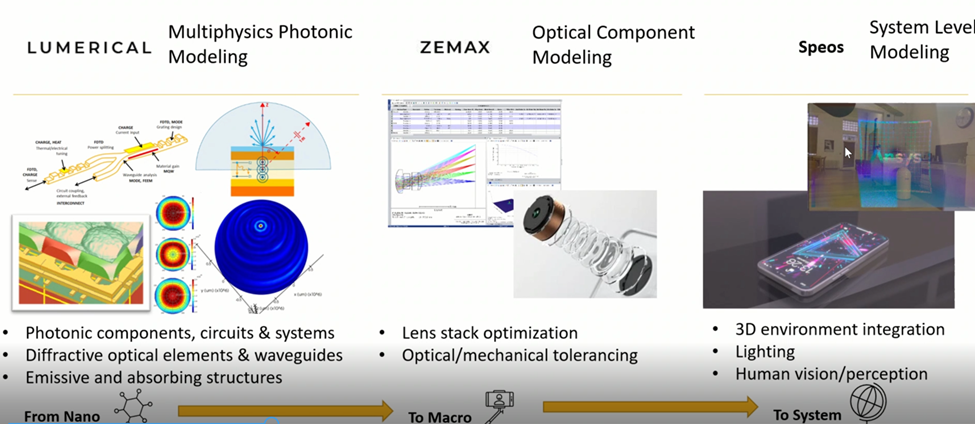
Fig.3 Virtual prototyping by Ansys
Ansys has developed a simulation workflow that assesses the optical performance of AR systems, integrating optical systems with gratings under specific lighting conditions. The collaboration between Ansys Zemax OpticStudio and Ansys Lumerical leads to a thorough system-level analysis, with Ansys Speos playing a pivotal role in integrating and streamlining the simulation process. Fig. 4 depicts the workflow of Lumerical, Zemax, and Speos for AR glasses.
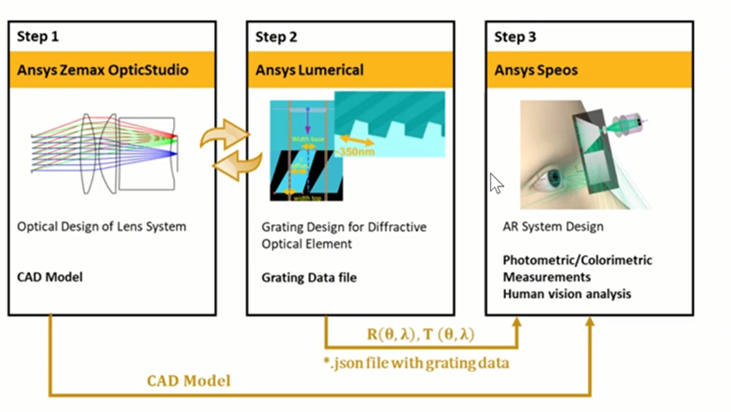
Fig 4. Ansys workflow for AR glasses simulation (https://optics.ansys.com/hc/en-us/articles/12157334700435)
Lumerical: The Powerhouse of Light Interaction
Lumerical stands out for its focus on light-material interactions. Its prowess lies in:
- Grating Structures: Lumerical excels in simulating grating structures, essential for AR glasses. Its FDTD Solutions product empowers designers to optimize complex grating behaviors, ensuring precise light direction for unparalleled AR experiences.
- Waveguide Simulations: Waveguides are photon highways in AR glasses. Lumerical's Solutions is a beacon for waveguide design, enabling compact and efficient systems.
- Nano-photonic Components: As AR/VR devices evolve, nano-photonic components become indispensable. Lumerical offers precise simulation tools for these devices, ensuring peak performance even at minuscule scales.
- Thermal Management: Lumerical's Multiphysics Suite aids in understanding the thermal dynamics of photonic devices, a crucial aspect for user safety and comfort in AR/VR.
- Software Integration: Lumerical's compatibility with other design software streamlines the transition from optical design to photonics simulation, expediting product development.
Fig.5 showcases various grating designs, highlighting Lumerical's optimization capabilities.
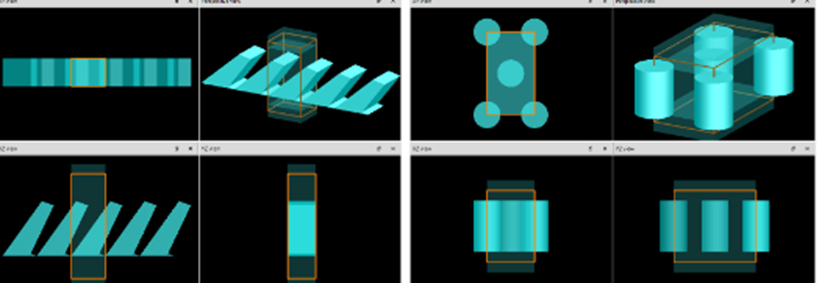
Fig.5 illustrates various grating designs, emphasizing the optimization capabilities of Lumerical.
Zemax OpticStudio: Crafting Precision in Optical Design
Zemax is renowned for its optical design capabilities, essential for:
- Comprehensive Optical System Design: Zemax's OpticStudio offers a holistic platform for designing and optimizing complete optical systems, ensuring unparalleled visual quality.
- Stray Light Analysis: Zemax's tools mitigate unwanted light, enhancing image quality.
- Virtual Prototyping: Zemax facilitates rapid design iterations, leading to both time and cost savings.
- Waveguide Design & Analysis: Zemax's prowess in waveguide design ensures efficient light coupling and pristine image projection.
Zemax's toolkit is a boon for AR/VR designers, ensuring devices deliver unmatched visual experiences. The synergy between Lumerical and Zemax is vital for rapid simulation.

Fig.6 The synergy between Lumerical and Zemax is vital for rapid simulation. (https://optics.ansys.com/hc/en-us/articles/9084380749587)
Speos: Simulating Human Perception
Speos stands out for its emphasis on human optical perception. It's pivotal for:
- Human Visual Perception Simulation: Speos's unique capability to simulate human visual perception ensures user-centric optimizations.
- Integrated CAD Workflow: Its integration with CAD platforms streamlines the design process.
- Advanced Light Modeling: Speos's comprehensive light source and material library enable accurate modeling of complex light behaviors.
System validation is a critical phase in the development of AR systems, ensuring that the design aligns with human perceptual needs. This process involves testing and validating the design in various virtual controlled scenarios, encompassing a range of environments such as interiors, exteriors, varying lighting conditions like natural and artificial light, and different times of the day. A key aspect of this validation is understanding human vision. The model used delves deep into various facets of vision, including eye sensitivity across scotopic, mesopic, and photopic ranges, glare, the eye's adaptation from shadow to bright light, color vision deficiencies, the impact of observer age, vision acuity, and depth of field. Tools are employed to assess legibility, visibility, and the ability to distinguish different colors as perceived by the human eye. Another pivotal aspect is the perceived quality, which evaluates how outsiders view the headset user. With tools like Ansys Lumerical, SPEOS, and ZEMAX, the AR system's design is optimized, ensuring that the human eye can adjust its focus at specific distances, providing a seamless experience. Whether it's an RGB display with an optimized incoupling grating or an optical polished surface with AR coating, every detail is meticulously validated to ensure the user's visual experience is unparalleled.
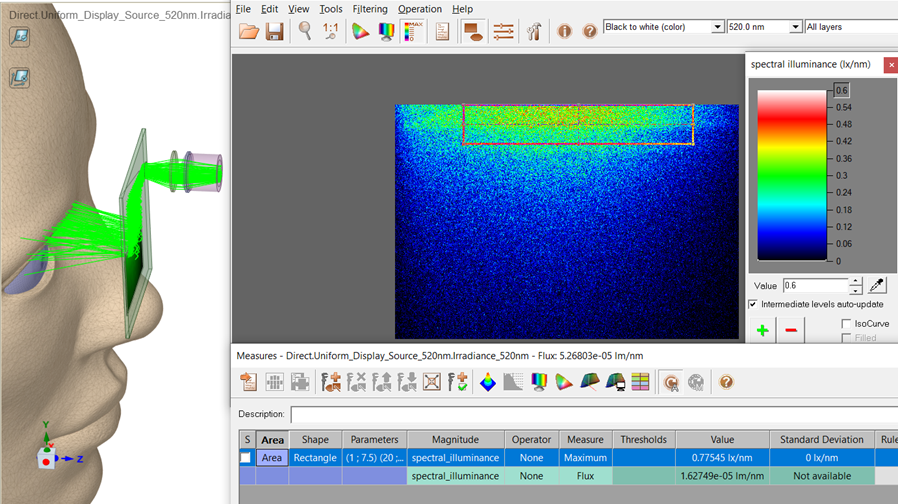
Fig.7 Illustration of Speos output.
The Significance of optiSLang in Optical Simulations
OptiSLang stands as a cornerstone in the realm of optical simulations, especially when dealing with intricate systems like the Exit Pupil Expander (EPE). Its role becomes even more pronounced when optimizing systems with a multitude of parameters. Here's why:
- System-Level Control: OptiSLang offers overarching control for system-level optimization. By adjusting the grating model, it ensures the entire EPE system achieves the required optical performance.
- Dynamic Linking: The dynamic link between platforms like Lumerical and OpticStudio is managed efficiently by optiSLang. This ensures that accurate grating models from Lumerical are seamlessly integrated into OpticStudio.
- Advanced Optimization Techniques: With optiSLang, the optimization process is not just about adjusting parameters. It employs advanced techniques, such as pre-processing and post-processing during each optimization cycle. This includes tasks like convolution of the result with a pupil function, which is pivotal for achieving desired outcomes.
- Python Integration: The use of Python nodes in optiSLang provides a flexible environment for defining functions, reducing variables, and thus, cutting down optimization time. This integration allows for a more tailored approach to optimization, ensuring that the most impactful parameters are identified and adjusted accordingly.
- Visualization and Analysis: OptiSLang doesn't just optimize; it provides tools for visualizing results from multiple optimization runs. This aids in understanding trade-offs and making informed decisions on the best design choices.
Fig.8 shows the workflow of optimizing the AR waveguides using Optislang.
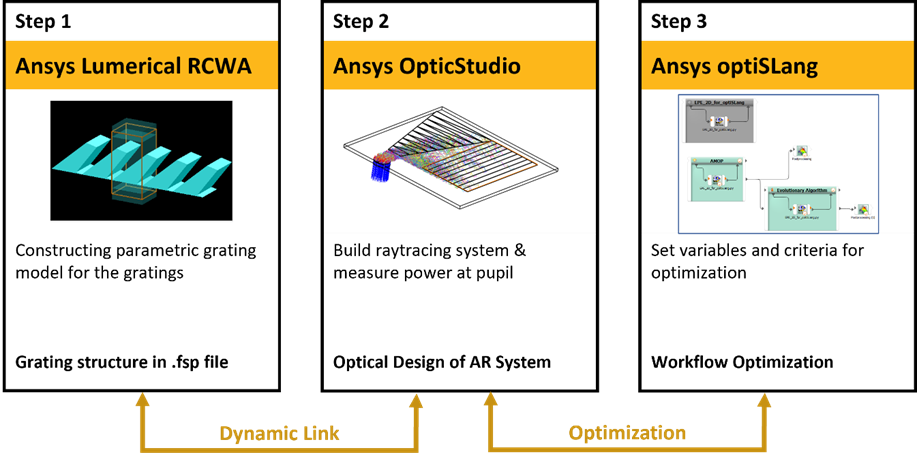
Fig.8 Workflow of optimizing the AR waveguides using Optislang. (https://optics.ansys.com/hc/en-us/articles/17721058552083)
Conclusion
In the rapidly advancing world of AR and VR, the precision and efficiency of optical and photonic simulations stand out as paramount. The intricate synergy of tools like Lumerical, renowned for its expertise in grating and waveguide design, Zemax OpticStudio with its unmatched prowess in optical design, and Speos, which places a unique emphasis on human optical perception, is collectively shaping the next wave of immersive experiences. As AR/VR devices aim for lightweight designs, lifelike high-definition imagery, and optimal user comfort, the significance of simulations grows exponentially. Harnessing the capabilities of these tools, from detailed waveguide simulations to nuanced human visual perception modeling, becomes a cornerstone for endeavors looking to lead in the AR/VR domain. As we continue to redefine the limits of digital immersion, the integration of optics, photonics, and state-of-the-art simulation tools will undeniably pave the path forward.
Tags:
lumerical, Zemax, AR/VR, Speos, Immersive Technology, optical simulation, Grating, Waveguide, Ansys PhotonicsOct 31, 2023 12:13:40 PM
